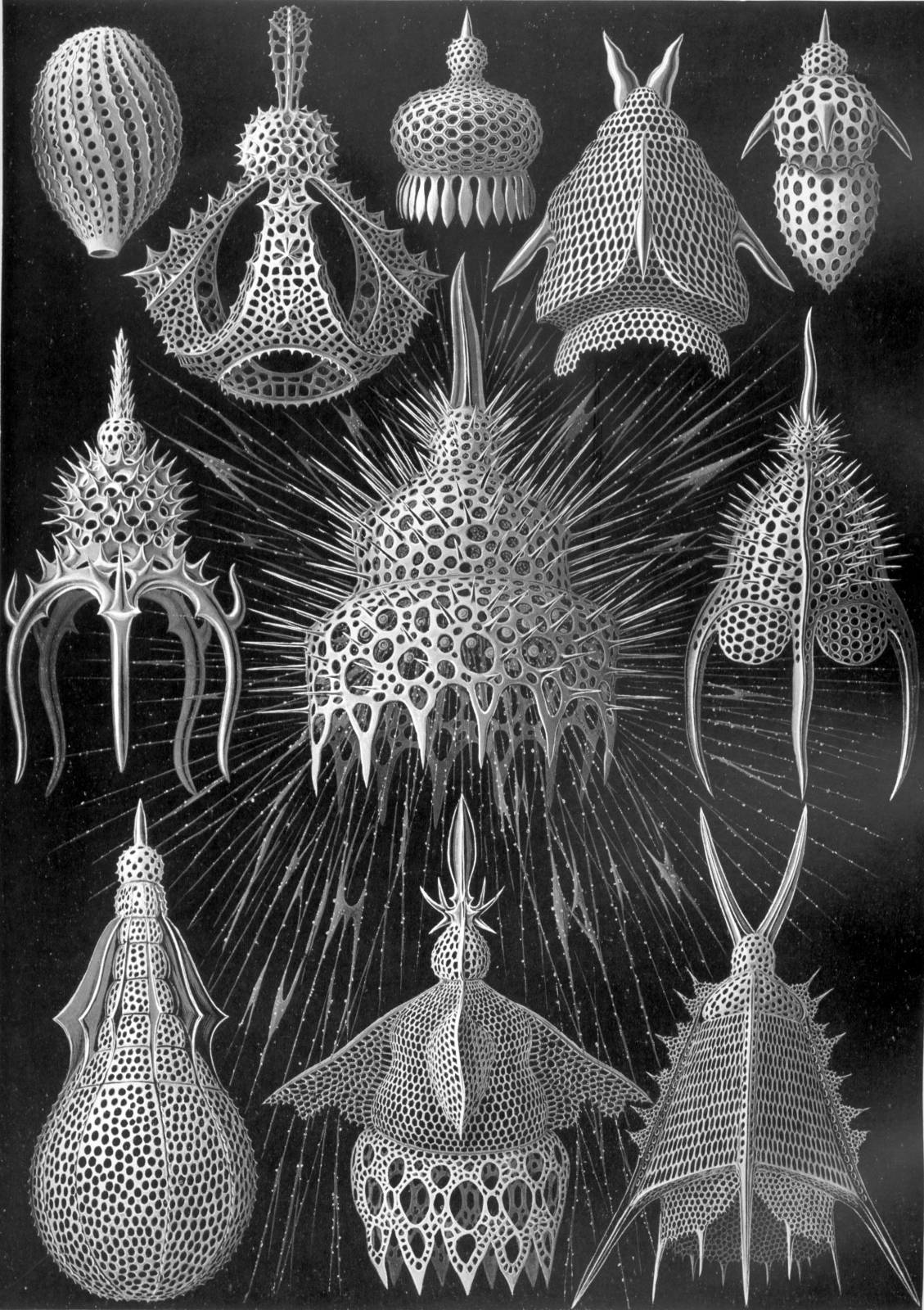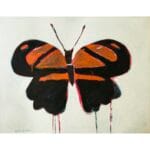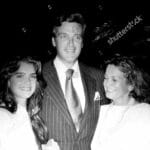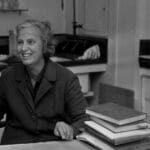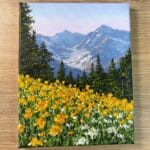Step into the captivating world of Ernst Haeckel, a brilliant artist and scientist whose breathtaking illustrations brought the wonders of nature to life. Imagine diving into the depths of the ocean, marveling at the exquisite forms of sea creatures captured in intricate lithographs. Or tracing the stages of embryonic development through vibrant watercolors, revealing the hidden intricacies of life’s beginnings. Haeckel’s iconic masterpiece, “Art Forms in Nature,” became a timeless inspiration for artists, illuminating the beauty and complexity of the natural world.
Unveiling the Artistic Genius of Ernst Haeckel
Born in Germany in 1834, Ernst Haeckel wasn’t just a scientist; he was an artist who painted with the intricate details of the natural world. As a biologist, naturalist, philosopher, and doctor, Haeckel’s captivating art made him famous during a time when people were just beginning to understand the vastness and interconnectedness of life on Earth. Armed with his paintbrush and microscope, Haeckel took on the mission of showing the world just how beautiful evolution could be. He traveled to far-off lands, sketching exotic creatures in meticulous detail, uncovering a world of microscopic organisms invisible to the naked eye.
His most famous work, “Kunstformen der Natur” (or “Art Forms in Nature” for us English speakers), was a groundbreaking blend of science and art. Published in sets between 1899 and 1904, this collection of over 100 detailed prints showcased the stunning diversity of life, from the tiniest radiolarians (single-celled sea creatures) to the majestic jellyfish and beyond.
A fervent admirer of Charles Darwin and his theory of evolution, Haeckel saw the beauty and logic in Darwin’s ideas, and his artwork became a powerful tool for making these complex scientific concepts understandable to everyday people. He gave a face (or rather, a beautifully rendered illustration) to the idea that all living things are related, connected in a grand tree of life.
Haeckel’s Tools: A Symphony of Science and Art
Ernst Haeckel’s artwork, a blend of scientific accuracy and artistic flair, played a pivotal role in bringing Darwin’s theories to life for a wider audience. While no detailed inventory of his tools exists, we can make some educated guesses based on the characteristics of his drawings.
His illustrations, brimming with fine lines and intricate details, strongly suggest the use of pen and ink. These tools would have provided the precision needed to capture the delicate features of the natural world. Given their size and intricate structures, it’s highly probable that he relied heavily on microscopes to observe and accurately render these minute life forms.
But Haeckel’s illustrations went beyond mere scientific documentation. He breathed life into his subjects, employing vibrant watercolors to add depth and dimension to his work. This artistic touch made his scientific illustrations not only accurate but also visually captivating, contributing to their widespread appeal.
While we can’t be entirely sure about every tool in Haeckel’s arsenal, it’s clear that his skillful combination of traditional drawing tools, microscopes, and watercolors allowed him to bridge the gap between science and art, sparking public imagination and leaving an indelible mark on the history of scientific illustration.
A Legacy of Art and Science: Haeckel’s Enduring Impact
Ernst Haeckel was a scientific polymath—a biologist, naturalist, philosopher, physician, professor, and an artist. He masterfully merged his love for science and art, creating stunning drawings of diverse organisms. His meticulously crafted illustrations weren’t mere scientific sketches; they were works of art that showcased the incredible beauty hidden within the tiniest details of nature.
This unique talent made him a scientific rockstar, and his captivating visuals helped make Charles Darwin’s groundbreaking theory of evolution accessible and even exciting to the general public. His illustrations breathed life into complex evolutionary concepts, making them understandable in a time without photos or even fancy diagrams.
Haeckel’s influence transcended the scientific world, becoming a source of inspiration for the Art Nouveau movement—think flowing lines and nature-inspired designs. Even today, his work continues to inspire artists and designers, proving that the beauty of the natural world transcends time and trends.
Haeckel was also a serious scientist who made significant contributions to biology. He was a huge supporter of Darwin’s theory of evolution and used his art to illustrate and explain its concepts. He coined terms like “ecology,” “phylum,” or “protista,” which are still widely used in biology today.
Fascinated by the ocean, Haeckel spent a lot of time studying marine life, especially tiny creatures called radiolarians. This led to the discovery and classification of countless new species. However, it’s important to acknowledge that not all of Haeckel’s work has aged well. Some of his illustrations, especially those of embryos, have been called into question for potential inaccuracies and possible manipulation.
Additionally, some of Haeckel’s views, particularly those regarding race, were harmful and are now rightfully condemned. As with many historical figures, it’s crucial to appreciate his contributions while acknowledging the complexities and flaws that were also a part of who he was.
Artists Inspired by Haeckel’s Vision
Ernst Haeckel, the German biologist, and artist, had a serious eye for beauty in nature. His travels, especially to tropical places, fueled his artwork. His most celebrated creation, “Kunstformen der Natur” (Art Forms in Nature), published between 1899 and 1904, was a collection of 100 stunning lithographic prints showcasing Haeckel’s most captivating biological illustrations. These illustrations didn’t just wow the science crowd, they sparked inspiration in the art world too. Big names like Émile Gallé, Antoni Gaudí, Louis Sullivan, and Louis Comfort Tiffany found themselves drawn to Haeckel’s unique style.
Émile Gallé, a French glass artist known for his leading role in the Art Nouveau movement, was particularly captivated by Haeckel’s depictions of plants and flowers. You can almost sense the influence of those illustrations in Gallé’s flowing, organic glasswork. Antoni Gaudí, the Catalan architect famous for his incredibly imaginative buildings, seemed to draw inspiration from Haeckel’s illustrations of marine life. Those intricate details and unusual forms found their way into Gaudí’s architectural masterpieces.
Then there’s Louis Sullivan, the American architect often called “the father of skyscrapers.” Haeckel’s illustrations of organic forms and patterns likely influenced Sullivan’s designs, adding a touch of nature’s elegance to the rising steel giants. Even Louis Comfort Tiffany, the American artist celebrated for his vibrant stained glass and those iconic Tiffany lamps, found inspiration in Haeckel’s work. You can see echoes of Haeckel’s jellyfish and other sea creatures in the flowing forms and luminous colors of Tiffany’s creations.
While we can’t say with absolute certainty that these artists sat down with Haeckel’s illustrations and directly copied them, the similarities in their styles and the timing of their work strongly suggest a connection. It’s fascinating to think that the meticulous scientific observations of a biologist could ignite the imaginations of artists working in such different mediums. Haeckel’s work reminds us that art and science, while distinct disciplines, can beautifully intertwine and inspire.
Discover the incredible life and work of Francis Alexander Shields, a renowned Victorian artist. Additionally, explore the fascinating story of Freddie Mercury and Jim Hutton, a couple who shared an extraordinary bond.
- Unveiling the Enigma: Mansoureh Khojasteh Bagherzadeh’s Public Appearances & Private Life in Iran - July 18, 2025
- Unveiling the Mystery: Mansoureh Khojasteh Bagherzadeh’s Husband: A Rare Glimpse into a Private Life - July 18, 2025
- Unveiling Masoud Khamenei’s Mother: Power, Influence, and Iran’s Future - July 18, 2025
